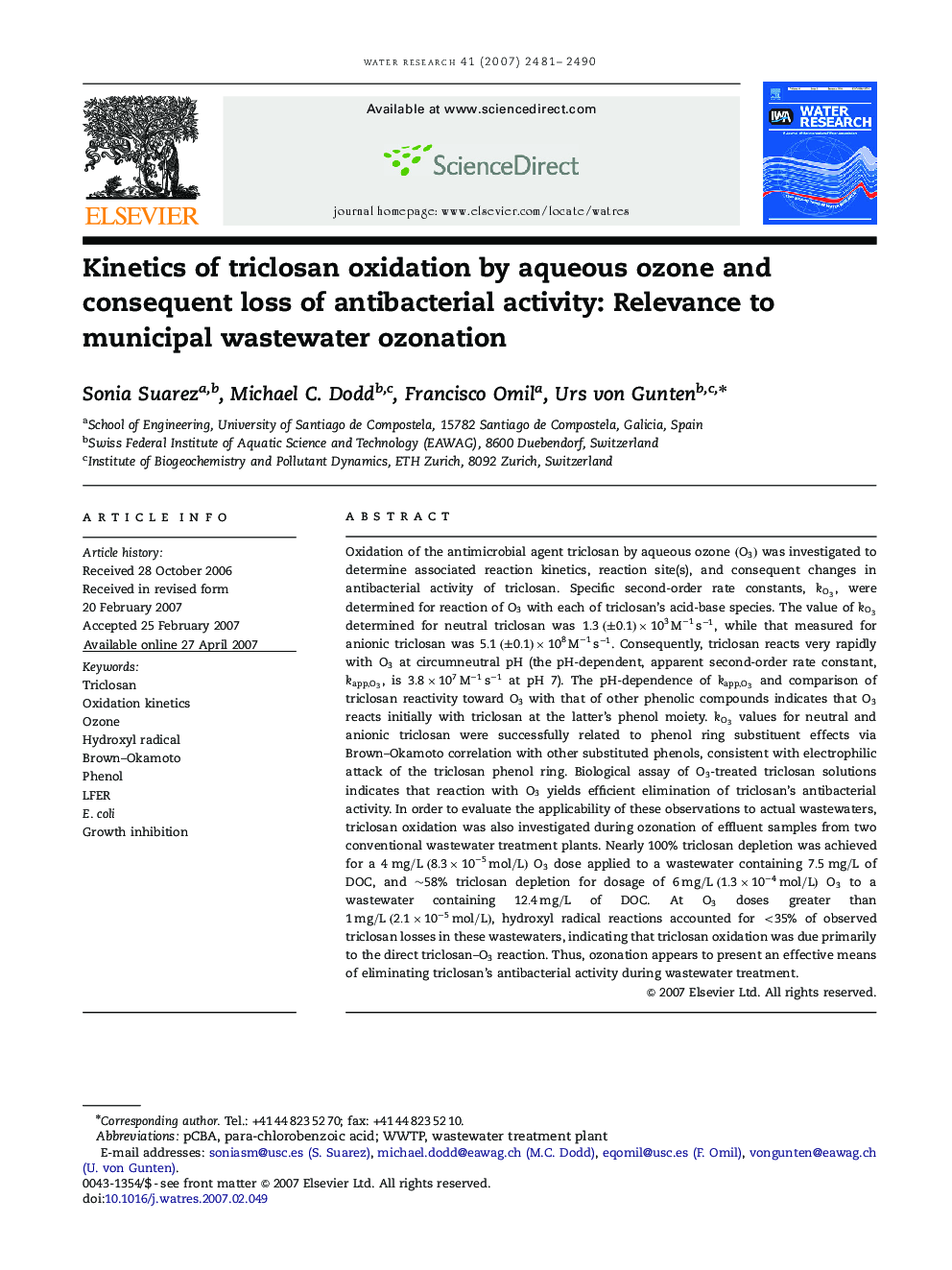| کد مقاله | کد نشریه | سال انتشار | مقاله انگلیسی | نسخه تمام متن |
|---|---|---|---|---|
| 4486335 | 1316985 | 2007 | 10 صفحه PDF | دانلود رایگان |

Oxidation of the antimicrobial agent triclosan by aqueous ozone (O3)(O3) was investigated to determine associated reaction kinetics, reaction site(s), and consequent changes in antibacterial activity of triclosan. Specific second-order rate constants, kO3kO3, were determined for reaction of O3O3 with each of triclosan's acid-base species. The value of kO3kO3 determined for neutral triclosan was 1.3(±0.1)×103M-1s-1, while that measured for anionic triclosan was 5.1(±0.1)×108M-1s-1. Consequently, triclosan reacts very rapidly with O3O3 at circumneutral pH (the pH-dependent, apparent second-order rate constant, kapp,O3kapp,O3, is 3.8×107M-1s-1 at pH 7). The pH-dependence of kapp,O3kapp,O3 and comparison of triclosan reactivity toward O3O3 with that of other phenolic compounds indicates that O3O3 reacts initially with triclosan at the latter's phenol moiety. kO3kO3 values for neutral and anionic triclosan were successfully related to phenol ring substituent effects via Brown–Okamoto correlation with other substituted phenols, consistent with electrophilic attack of the triclosan phenol ring. Biological assay of O3O3-treated triclosan solutions indicates that reaction with O3O3 yields efficient elimination of triclosan's antibacterial activity. In order to evaluate the applicability of these observations to actual wastewaters, triclosan oxidation was also investigated during ozonation of effluent samples from two conventional wastewater treatment plants. Nearly 100% triclosan depletion was achieved for a 4mg/L(8.3×10-5mol/L)O3O3 dose applied to a wastewater containing 7.5mg/L of DOC, and ∼58%∼58% triclosan depletion for dosage of 6mg/L(1.3×10-4mol/L)O3O3 to a wastewater containing 12.4mg/L of DOC. At O3O3 doses greater than 1mg/L(2.1×10-5mol/L), hydroxyl radical reactions accounted for <35%<35% of observed triclosan losses in these wastewaters, indicating that triclosan oxidation was due primarily to the direct triclosan–O3O3 reaction. Thus, ozonation appears to present an effective means of eliminating triclosan's antibacterial activity during wastewater treatment.
Journal: Water Research - Volume 41, Issue 12, June 2007, Pages 2481–2490